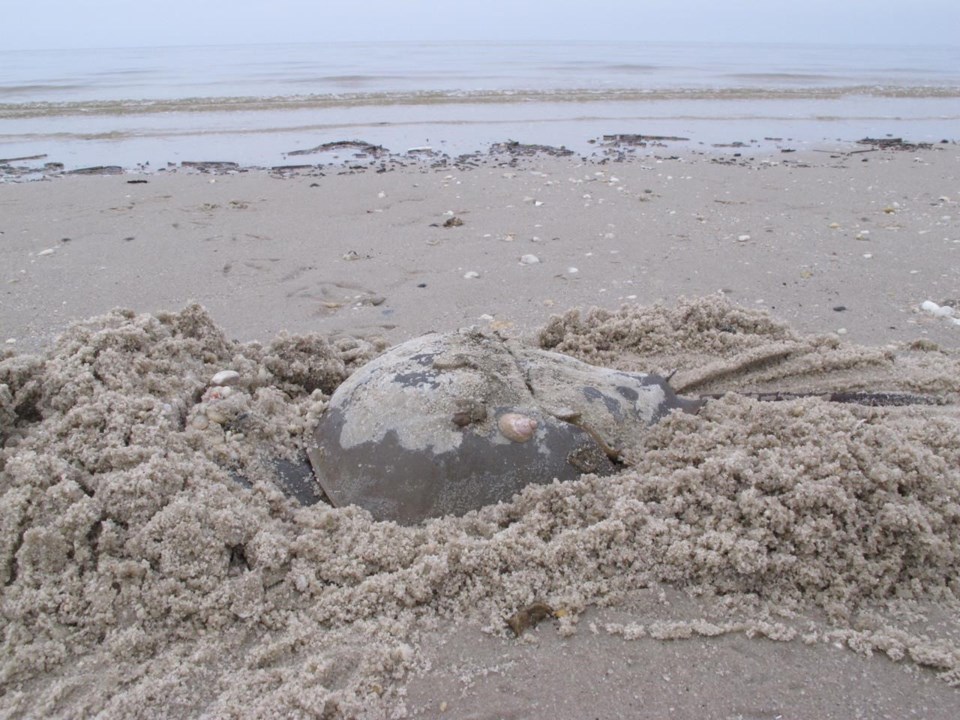VANCOUVER — A scuba diver cleaning part of the sea floor in a Vancouver inlet came across an animal that an expert says is a long way from home.
The unusual find has been identified as a horseshoe crab, native to the Atlantic Ocean along the North American coastline.
"This is not a species that's indigenous to our water here, but as soon as I saw it, I knew what it was," diver Henry Wang said in an interview.
"I knew immediately it wasn't supposed to be here."
Wang said he was really excited and posted a short clip to social media about his dive on Friday in False Creek, showcasing the discovery. In the video, he is seen gently nudging the shell before displaced sediment clouds the camera's view.
Michael Hart, a professor of biological sciences at Simon Fraser University, saw the video and said he doesn't believe the crab is alive.
"The long tail is used to dig in sediment, so I would expect a live animal to react by flexing the tail. The live animal also has five pairs of walking legs under the big dome-shaped carapace, and those would normally react by trying to back away from a large animal like a scuba diver," he said.
Hart noted there are four species of horseshoe crabs. Though he said it is hard to tell from the video, he speculates this was an Atlantic horseshoe crab, which live in the Atlantic Ocean along the North American coastline and Gulf coasts from Maine to Mexico. The other three species are found in Southeast Asia.
Hart said Pacific water around Vancouver is too cold for the crabs to survive and for them to reproduce as the embryos develop in the sand of warm beaches.
"Horseshoe crabs are often collected, killed, and the lacquered shells sold as ornaments. This could be a discarded decoration. The other possibility noted by the YouTube poster Henry Wang is that the crab was an aquarium pet that was dumped in the creek," Hart said.
"I sincerely think this isn't a biology story, it's a waste management story."
Wang, who is the co-founder of Divers for Cleaner Lakes and Oceans, said he lost all visibility after prodding the crab shell, and because he wasn't yet certain if it was dead, he did not remove the crab from the water.
"Crabs are above my pay grade," he joked. "I'm only there to get the garbage out."
Divers for Cleaner Lakes and Oceans has been removing trash from B.C.'s waterways since 2013. Wang said the group has done over 200 cleanup dives and removed more than 50,000 pounds of garbage.
He said they often film their dives to post on social media to showcase how much garbage they collect, hoping to inspire change in the way people act around waterways.
Wang explained he was diving in False Creek to recover mats that had been blown into the waterwhen he noticed the crab under a floating dock.
He said he considers it the "craziest" find so far. Other interesting discoveries, he said, include 120-year-old logging tools and a 90-year-old Puget Sound Falling Axe.
"This is my new craziest thing. It's awesome, but I'm sure something else will pop up eventually because I keep finding things," Wang said. "I had no idea I was going to find a horseshoe crab. That's just how things worked out."
This report by The Canadian Press was first published Feb. 22, 2023.
Brieanna Charlebois, The Canadian Press



